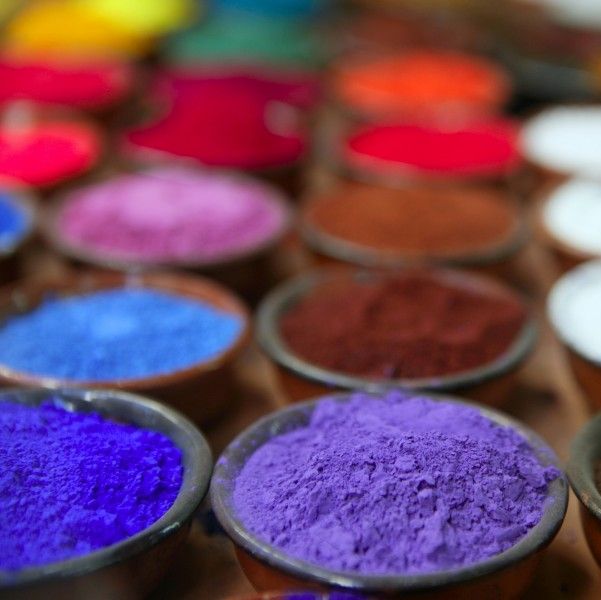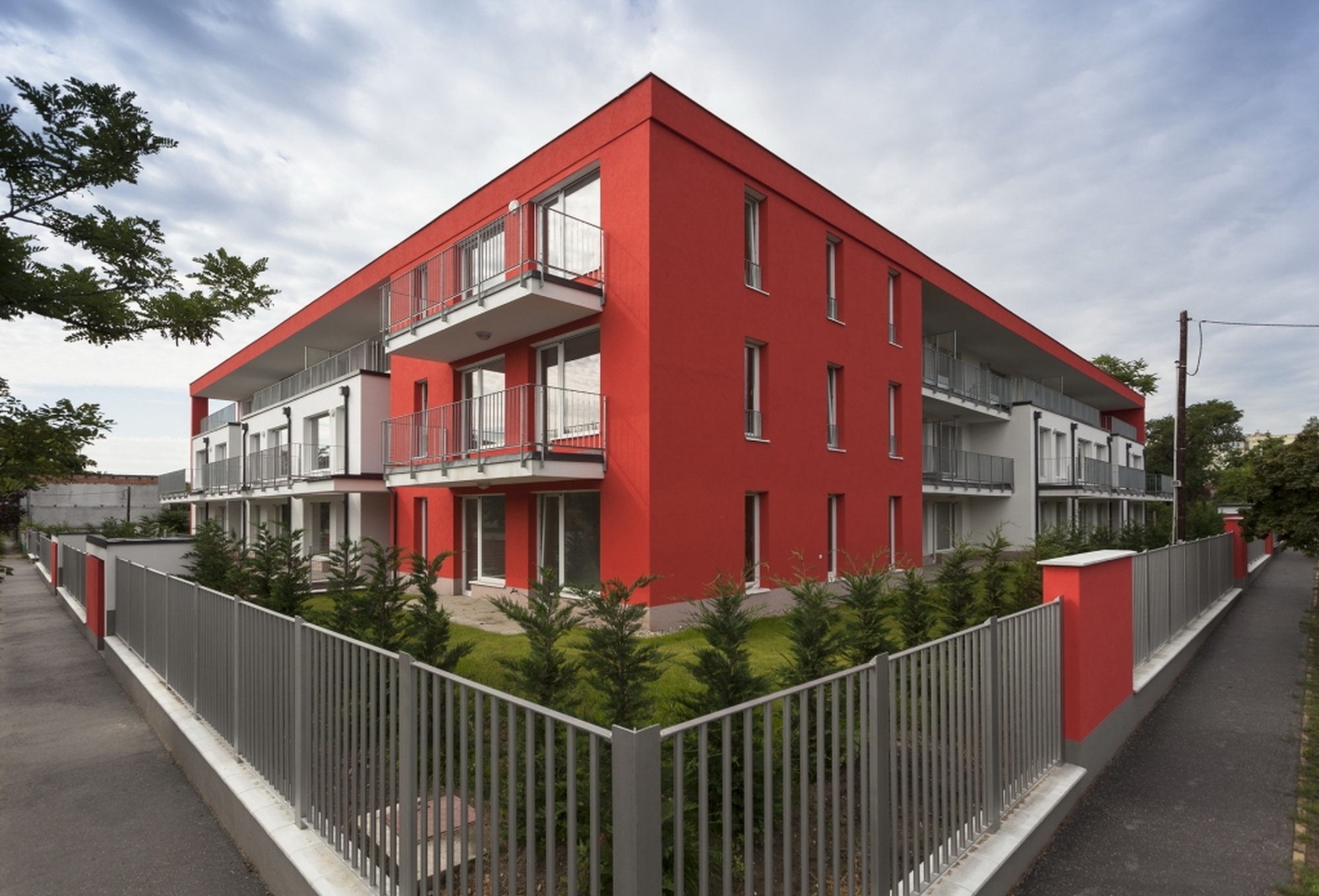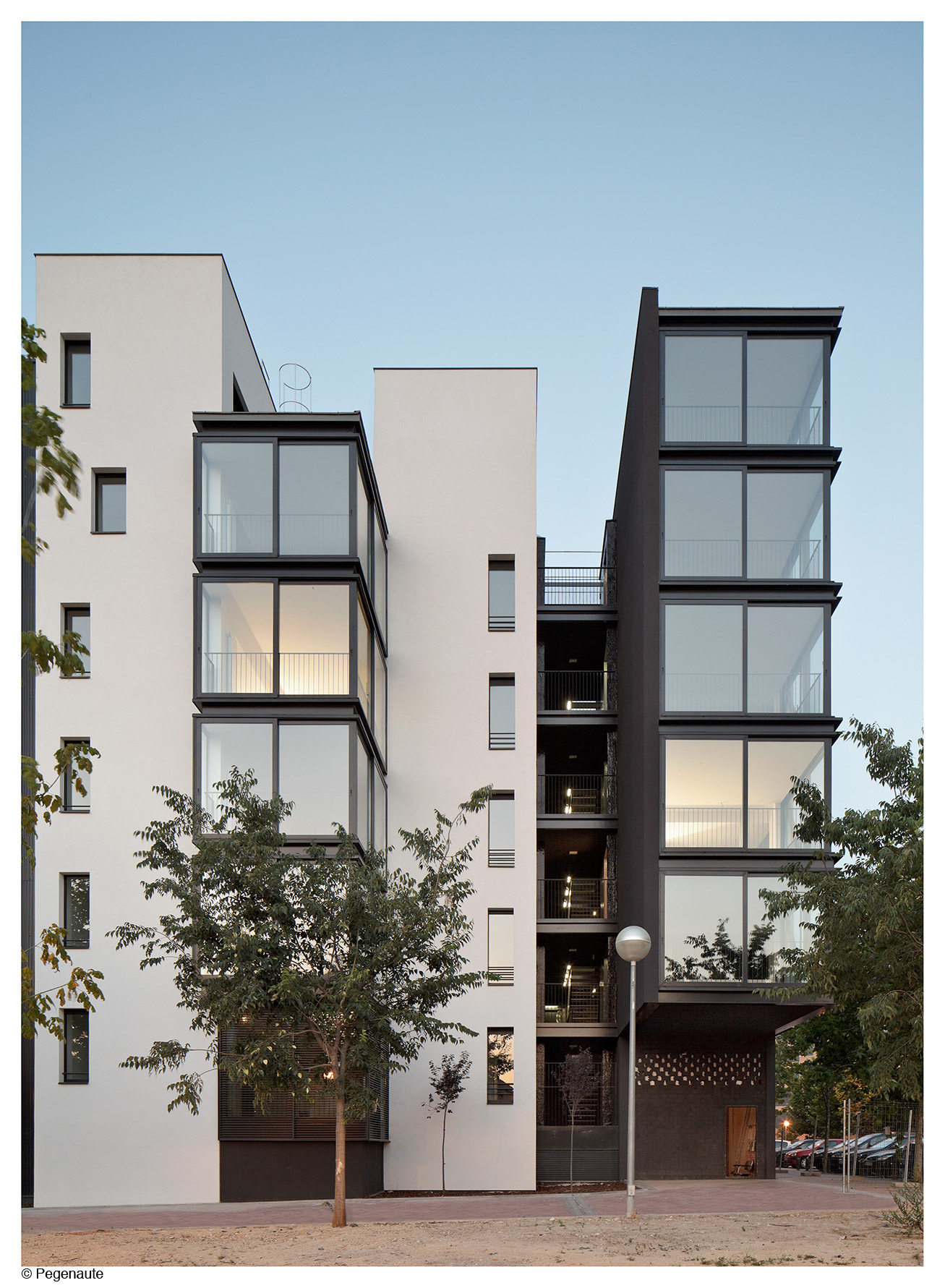


Intense colors are a trend that poses a real challenge for material manufacturers. With Baumit you can now combine the colorful ideas of an architect, designer or investor with high demands on the efficiency and quality of a long-life material.
Dark shades attract much sunlight radiation, whereby unwanted overheating of the surface occurs. The paintings are used to be denoted by a coefficient of light reflectance HBW. For better imagination, white colour has the value of HBW 100, that mens, 100 % of light is reflected. On the contrary, black colour absorbs all light, so it has the reflectance value of 0. Thereby the absorbed sunlight radiation generates heat of the surface.
The thermal insulant protects the house and thereby heat does not leak outside. On the other side, it hinders sun energy to get through inward.
And so, in a ca. 5 mm thin layer on the surface, which is created by a layer of adhesive with a gauze and facade plaster, it comes to overheating and increase of temperature, what may result in damage of plaster and emergence of cracks.
 A helping hand was given by the manufacturers of pigments, who intruduced to the market special cool pigments, which absorb much less sunlight radiation and their surface is cooler.
A helping hand was given by the manufacturers of pigments, who intruduced to the market special cool pigments, which absorb much less sunlight radiation and their surface is cooler.Sunlight radiation consists of a number of components. By our eyes, we perceive only the visible part of light. However, the manufacturers were attracted mainly by the infrared component, which creates heat. After investigation for a number of years, they succeeded in development of pigments, which are able to reflect more sunlight energy, especially its heat constituent.
Highly durable façade render for intensive and vivid color shades
The pigments of the new generation are also used in the Baumit facade plasters and paints. For better orientation, the colour shades began to be denoted by the TSR coefficient, which substituted the original HBW. TSR is a coefficient of overall sunlight reflectance, which characterizes the ability of the facade to reflect all components of sunlight radiation.
Essays and experience have proven that by using cool pigments you can reach on the surface lower temperature by more than 10°C. This has also an influence on the temperature of ambient air, which is not so much heated by radiated heat.
At selection of painting for a house, you will now easily get oriented. For thermally insulated facades, simple rules apply. For common thermal insulation, you can use all colour shades with TSR higher than 25, without any limitations.
But what about darker shades?
Also here, you are not forced to any limitations in design. You just have to take into account higher costs for correct selection of the material and realization. Also in this case, the insulant does not play any role. You can use mineral wool as well as polystyrene.
You just have to perform at the insulant a duplicate reinforcement layer by means of a flexible affixing lining material, or to apply one layer with special dispersive lining material reinforced by fibres. In this case you get as a bonus a facade bore resistant to mechanical damage.

Baumit open thermal insulation
Double reinforcement layer: 2x (Baumit openContact + openTex)
Total thickness of the reinforcement layer: 5 ‑ 6 mm
Thermal insulation Baumit Star EPS
Alt. 1: Double reinforcement layer: 2x (Baumit StarContact White alt. StarContact + StarTex)
Total thickness of the reinforcement layer: 5 ‑ 6 mm
Alt. 2: Standard reinforcement layer: 1x Baumit StarContact Forte + StarTex
Total thickness of the reinforcement layer: 5 ‑ 8 mm
Thermal insulation Baumit Power
Standard reinforcement layer: 1x Baumit PowerFlex + StarTex
Total thickness of the reinforcement layer: 3 ‑ 4 mm
